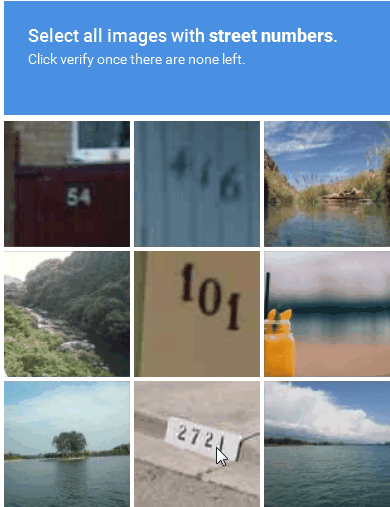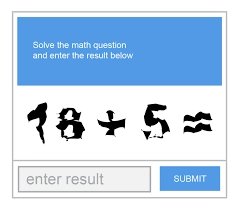CAPTCHA systems are dynamic and constantly change to prevent bypass attempts. This evolution requires web scrapers to adapt and develop new methods, highlighting the need for dependable solutions.
This article examines the main methods for bypassing CAPTCHA systems and provides an overview of the various CAPTCHA types encountered in web environments.
What is a CAPTCHA?
CAPTCHA (Completely Automatic Public Turing Test to Tell Computers and Humans Apart) is an automatic challenge-response test used on computing systems to validate that the user is human rather than a bot. Common implementations include Google reCAPTCHA (v2 checkbox, image challenges; v3 score-based), hCaptcha, and invisible reCAPTCHA.
Advancements in AI and automation have enabled bots to circumvent multiple CAPTCHA types. In response, CAPTCHA developers introduce new challenges and employ behavioral analysis to maintain system effectiveness.
3 ways to handle reCAPTCHA & hCaptcha in web scraping
There are generally three primary strategies for bypassing CAPTCHA systems:
1. Using a stealth browser (mimicking human behavior)
This approach aims to make automated browsers emulate human user behavior. The primary techniques include the following:
Headless browser detection evasion:
Stealth libraries, such as playwright-extra with its stealth plugin or selenium-stealth, change browser properties before website JavaScript can inspect them. For example, websites may use the navigator.webdriver property to detect bots. Stealth techniques cause this attribute to appear false or absent.
Randomized interactions:
Automated bots typically operate with consistent timing and movement patterns. Introducing random delays and unpredictable mouse movements increases the likelihood of mimicking human behavior.
Cookie and session management:
Websites use cookies to preserve state, track user preferences, and identify returning users. Scraping frameworks should be set up to protect and reload cookies for future requests, allowing the website to recognize the automated session as a return visitor.
Proxy rotation:
Sending a high volume of requests from a single IP address is often flagged as suspicious. Utilizing multiple proxy servers and rotating between them distributes requests and reduces detection risk.
Browser fingerprint spoofing:
Each browser generates a unique fingerprint based on its configuration and system attributes. Stealth tools modify or randomize these attributes to hinder bot identification by websites.
2. Using Artificial Intelligence (AI) for image recognition
AI, specifically deep learning models, can be trained to solve image-based CAPTCHA. This includes:
Training a model to interpret CAPTCHA images requires a large dataset of labeled CAPTCHA images paired with correct responses. Data collection and annotation are typically the most resource-intensive components of this approach.
CAPTCHA images may be collected and submitted to human solver services to obtain solutions, which are subsequently used to build a training dataset. However, if a website modifies its CAPTCHA, existing datasets may become outdated.
3. Using CAPTCHA solving services (human or hybrid)
CAPTCHA-solving services are frequently regarded as the most reliable method. These services act as intermediaries between automated systems and CAPTCHA challenges:
Human solvers:
The CAPTCHA image is sent to a pool of human workers who solve it in real-time. Services like 2Captcha, Anti-Captcha, or DeathByCaptcha fall into this category.
For example, when your scraper captures the CAPTCHA image, it sends this information via an API call to the CAPTCHA solving service. The human worker solves the CAPTCHA and submits the solution back to the service. The service then returns the solution to your scraper via its API.
Hybrid solvers:
These systems utilize artificial intelligence models to address simple, well-understood CAPTCHA challenges and rely on human solvers for more complex or novel challenges. The CAPTCHA is routed to either an AI engine or a human solver based on its complexity.
Why is CAPTCHA a challenge for web scraping?
CAPTCHA functions as a digital gatekeeper, distinguishing between human users and automated programs. Web scrapers often interact with websites in repetitive patterns, such as clicking identical locations, navigating pages sequentially, and sending requests from a limited range of IP addresses.
For example, many scrapers use headless browsers (e.g., Chrome/Firefox in headless mode, Puppeteer, Playwright). These browsers, by default, have specific JavaScript properties that websites can detect, such as missing plugins.
CAPTCHA presents a significant challenge for web scraping by requiring automated systems to replicate unpredictable human behavior and cognitive processes. Encountering, solving, and submitting a CAPTCHA introduces delays into the data extraction workflow.
What are the common types of CAPTCHA?
CAPTCHAs are categorized into six types, each offering varying levels of security against automated programs. The most common CAPTCHA types include the following:
1. Image-based CAPTCHA
Image-based CAPTCHA presents a distorted image containing a word or sequence of characters that users must identify and enter into a text field (Figure 1).
The image distortion is designed to impede automated algorithms from recognizing characters while remaining solvable by humans. Image-based CAPTCHA effectively prevents bots from accessing websites, although it can be more challenging and time-consuming for users.
However, specific machine learning algorithms, such as convolutional neural networks (CNNs) and support vector machines (SVMs), can accurately solve various image-based CAPTCHA. These methods analyze large CAPTCHA image datasets to train models that recognize character patterns.
Consequently, many websites have adopted more complex CAPTCHA challenges, including interactive CAPTCHA and ‘No CAPTCHA’ systems. These approaches use various methods to differentiate between human users and automated bots.
Figure 1: An example of an image-based CAPTCHA solution

2. Audio-based CAPTCHA
Audio-based CAPTCHA presents a distorted audio recording containing a word or sequence of characters (Figure 2). Users must listen to the audio and accurately identify the spoken content. This CAPTCHA type is frequently used to accommodate individuals with visual impairments.
Figure 2: An example of audio-based CAPTCHA
3. Text-based CAPTCHA
Text-based CAPTCHA is presented in unusual and distorted formats. Users must accurately identify the text and enter it into a designated field to complete the challenge.
4. Math-based CAPTCHA
Math-based CAPTCHA provides users with a basic arithmetic problem to solve and enter into a text field, for example, ‘What is 3 + 2?’
Figure 3: Example of a math-based CAPTCHA

5. Interactive CAPTCHA
Interactive CAPTCHA requires users to complete a series of puzzles or tasks to verify their human identity.
6. Checkbox-based CAPTCHA
Checkbox-based CAPTCHA is a variant of reCAPTCHA, a free service developed by Google to help websites protect against unauthorized and fraudulent activities.
Checkbox reCAPTCHA prompts users to select a box to confirm they are not automated bots. Additional challenges may include selecting images that meet specific criteria or solving simple arithmetic problems.
Figure 4: Process flow diagram of Google reCAPTCHA

Be the first to comment
Your email address will not be published. All fields are required.